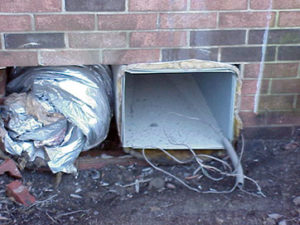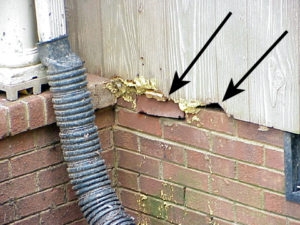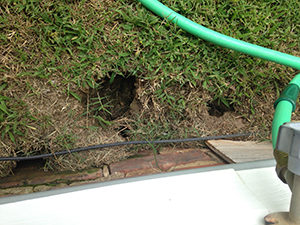Pest Problems After Storms – Rodents
go.ncsu.edu/readext?429269
en Español / em Português
El inglés es el idioma de control de esta página. En la medida en que haya algún conflicto entre la traducción al inglés y la traducción, el inglés prevalece.
Al hacer clic en el enlace de traducción se activa un servicio de traducción gratuito para convertir la página al español. Al igual que con cualquier traducción por Internet, la conversión no es sensible al contexto y puede que no traduzca el texto en su significado original. NC State Extension no garantiza la exactitud del texto traducido. Por favor, tenga en cuenta que algunas aplicaciones y/o servicios pueden no funcionar como se espera cuando se traducen.
Português
Inglês é o idioma de controle desta página. Na medida que haja algum conflito entre o texto original em Inglês e a tradução, o Inglês prevalece.
Ao clicar no link de tradução, um serviço gratuito de tradução será ativado para converter a página para o Português. Como em qualquer tradução pela internet, a conversão não é sensivel ao contexto e pode não ocorrer a tradução para o significado orginal. O serviço de Extensão da Carolina do Norte (NC State Extension) não garante a exatidão do texto traduzido. Por favor, observe que algumas funções ou serviços podem não funcionar como esperado após a tradução.
English
English is the controlling language of this page. To the extent there is any conflict between the English text and the translation, English controls.
Clicking on the translation link activates a free translation service to convert the page to Spanish. As with any Internet translation, the conversion is not context-sensitive and may not translate the text to its original meaning. NC State Extension does not guarantee the accuracy of the translated text. Please note that some applications and/or services may not function as expected when translated.
Collapse ▲Rain and wind can flood and damage natural nesting areas of rodents, forcing them to seek higher ground including inside your home (particularly into “high ground” such as attics). On farms, rodents will move inside stables, barns, poultry and swine houses. Damaged household goods, cut tree trunks and limbs, and other storm debris that are left piled on the property or become lodged in ditches or along streams quickly become homes for displaced rodents. Loosened soil around holes left by fallen trees create ideal burrowing sites. Damage to your home’s exterior can provide animals with easier access to sheltered areas, such as your crawlspace, basement, attic or even wall voids. People involved in cleanup and repairs may carelessly discard food and beverage items, which quickly attract rodents searching for food.
-
Watch for signs of rodent activity:
- Norway rats (our most common rat species) usually nest in underground burrows (right). However, in flooded areas, they will move to higher ground and may nest indoors. Roof rats typically nest above ground including in trees and mice will nest almost anywhere.
- Mice and rats can chew through many materials including siding, sheetrock, cardboard boxes, etc., to gain entry to an area.
- Rodent fecal droppings will often be found in indoor nesting or feeding areas.
- As soon as possible:
- Clear debris that provide protective cover for rodents around houses and buildings. Debris that cannot be removed from the site immediately, should be placed as far as possible from the building. That may be difficult or impossible particularly in neighborhoods.
- When time and conditions allow, trim back lawns and overgrown vegetation near buildings to eliminate protective cover for rodents.
- Remove or contain potential food sources such as household trash, spoiled or discarded food, bird feed, or grass seed in a storeroom, etc., that might attract mice and rats.
- Do not leave bowls of pet food outdoors overnight. They attract rats and other animals that can pose other problems, such as raccoons, skunks, and opossums.
-

Rodents can enter your crawlspace through openings where air conditioners or other utilities have been removed. (Image – S. Kirby, NCSU)
Depending on their age and size, rats can fit through openings as small as a quarter and mice may fit through dime-sized openings. Seal gaps around water pipes, utility line entry points, vents, crawlspace accesses and doors. Rodents can chew easily through foam and dried caulk to gain entry. Use sheet metal or 1/4-inch mesh galvanized hardware cloth to close large openings.
- Snap traps and glue boards can be used to catch rats and mice indoors, but may be difficult to place in key areas when repairs are underway. Bait the trigger mechanism with a food item such as corn (or another grain), peanut butter or oatmeal. Never place traps in areas where children and pets may be able to reach them. Check traps daily and dispose of carcasses quickly and appropriately to avoid problems with flies. Always wear gloves (preferably ones that are disposable or can be rinsed in detergent or bleach) whenever you handle traps and/or dead rodents, . If you don’t want to reuse the trap, you can pick it up with a plastic trash bag or plastic grocery bag, seal the bag, and dispose of it properly.
- Rodent baits are usually effective for mouse and rat control although the disruptions that occur during and after storms, as well as during subsequent clean-up activities, also disrupt normal rodent behavior. They may be less likely to visit bait locations. Carelessly discarded trash (or flood displaced garbage) may also provide a ready food source that distracts the rodents from finding/eating bait. It may also be difficult to place and inspect/maintain bait stations properly.
Baits must be used with great care. They should only be used in tamper-resistant bait stations and never placed where children, pets or wildlife can get to them. Do not use “place packs” or other types of rodent bait where they can easily be removed and/relocated by rodents because they may drop the bait where it may be found and accidentally eaten by children (who confuse it with candy) or by pets or wildlife. Poisoned rodents may also die in open or accessible areas where wildlife (or free-roaming pets) may eat them and become ill. Do not use baits indoors because the rat or mouse may die under the house, inside a wall or in another inaccessible area that prevents you from removing the carcass (and subsequent odor). Always follow the instructions on product labels carefully.





